Increase Power By Hitting Baseball Or Softball Better, Farther, & Harder | Babe Ruth Swing Mechanics Analysis
Learn how to increase power by hitting a baseball or softball better, farther, and harder. Discover how in this Babe Ruth swing mechanics analysis.
Baseball Hitting Drills For Power That Babe Ruth WOULD BE Talking About

Babe Ruth post impact…notice he’s not ‘squashing the bug’ with his back foot? 😉 Photo courtesy: ABCNews.com
This baseball hitting drills for power video post, featuring Babe Ruth, was recorded on Jun 11, 2013 for my old hitting site Swing Smarter Baseball Hitting Drills dot com (not online anymore). I’m going to revisit the information in this post because…
The coaching cues I teach now are a bit different, but what hasn’t changed are the human movement principles brought to light in the analysis. Since I created the video, it’s amassed over 151K views on YouTube.
Probably more now that you’re reading this. And by the way, the baseball hitting drills for power tips we’ll be covering work REALLY well for softball players too.
Don’t believe me?
CLICK HERE for a recent post I did discussing how similar the baseball and softball swings are. Be sure to read some of the comments at the end of the post, where I asked my readers who coach softball players, to share how these same human movement principles are working for their girls.
In this baseball hitting drills for power post, we’ll REVISIT and ADD information to the above video:
- What Forward Momentum looks like in Babe Ruth’s swing,
- How The Babe uses the Springy ‘X’ Pattern, and
- Compare how WR holding Shot Putter Ulf Timmerman uses the same human movement principles…
SCIENCE-BASED TRAINING:
Improve your hitting strategy dramatically by applying human movement principles.
Learn not only how and what to train but also the science behind the methods.
Baseball Hitting Drills For Power: What Forward Momentum Looks like in Babe Ruth’s Swing
I mention a few things in the video…
How The Babe seemingly throws his body (or hips) forward, making an aggressive move towards the pitched ball.
This looks very similar to a pitcher falling down the mound.
There was no ‘push off’ with his back leg, just a natural fall forward with his front leg catching him at stride landing.
In the above video, I also mention, how Babe Ruth commits his body weight forward, similar to how we walk…
A person’s body weight is shifted forward to the swing through leg, as the heel approaches the ground.
Unlike a cat taking a tentative step forward as if the ground is going to give way, we don’t walk by ‘sitting back’ at every step forward.
We walk more like dogs! Committing forward with EVERY step.
And this is WHY we shouldn’t be teaching hitters to ‘Sit back’ when hitting. Unless of course, you want to create timid and defensive swinging hitters that WILL reach a ceiling at the lower levels.
Now, using this same Babe Ruth style fall is where baseball hitting drills for power semi-fork away from fastpitch softball hitters.
Because of a shortened pitching distance and reaction time, we’ll see forward momentum look more like Lauren Chamberlain’s shifting foot pressure in the following video:
In this video, she starts super wide with her feet, but you’ll see her shift her weight back, then forward (watch her body move away from the grounded heavy bag behind her).
This is still a form of Forward Momentum. Just more tailored for a fastpitch hitting strategy.
In the above Babe Ruth video, I mention Un-Weighting, or the Un-Weighting Principle.
CLICK HERE for an HPL video demonstrating a test I use to get my hitters ‘buying into’ Forward Momentum benefits.
The bottom line with forward momentum is that it increases a hitter’s reaction time by giving them a head start.
It’s easier to change planes of motion when you’re already moving…rather than standing still like purely rotational hitters.
Does it take more energy to push a car when it’s already moving, or at a dead stop?
We want effortless power, NOT a powerless effort.
Are you concerned about too much head movement?
Check out these FOUR posts that address that issue:
- Softball Hitting Tips For Kids: Why Late Head Movement Fails & Early Head Movement Succeeds,
- Mike Trout Video: Why Consistency Won’t Improve,
- Baseball Batting Techniques: Simple Way To Use Forward Momentum That Works For Elite Hitters, and
- Perfect Swing Hacking With Forward Momentum.
How The Babe Uses the Springy ‘X’ Pattern
CLICK HERE for an HPL post talking about the science of tension/compression forces in the body, known as fascia.
CLICK HERE for another HPL post analyzing the swing of Adrian Gonzalez highlighting the Springy ‘X’ Pattern.
I call this piece of my hitting system the Catapult Loading System. This online video mini-course teaches exactly how to manipulate springy fascia for repeatable power.
Here’s one of my favorite YouTube interviews with Thomas Myers, who does a GREAT job explaining the role of springy fascia in the body, so the Layman understands:
Thomas Myers authored the book Anatomy Trains, which I highly recommend as a MUST read to anyone serious about teaching hitting. The information in his book holds the key to how hitting will be taught 5 years from now. BELIEVE IT.
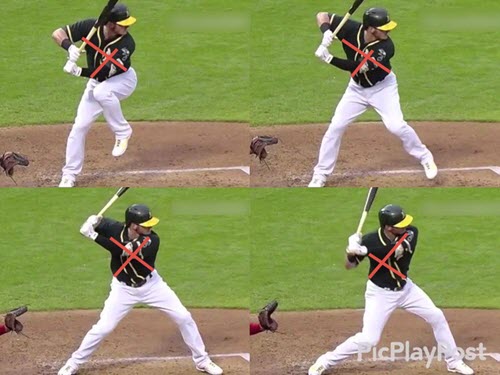
Watch how Josh Donaldson manipulates the Springy ‘X’ Pattern. Photo courtesy: YouTuber PastimeAthletics & PicPlayHost
There a couple baseball hitting drills for power points I’ve recently changed, when teaching hitting, different from the information in the Babe Ruth video above (thanks Lee Comeaux for pointing these out)…
- #1 – I don’t focus on the shoulders facilitating the Springy ‘X’ Pattern anymore, but the armpits (view Josh Donaldson RED ‘X’ image to the right). This is where, as Thomas Myers puts it, the Front Arm Fascial Line passes through connecting bottom of the left hand and arm, across the chest, to the bottom of the right hand and arm.
- #2 – Notice how Babe Ruth seems to be ‘hunched’ over from the start of his swing into loading the Springy ‘X’ Pattern? Dr. Kelly Starrett calls this global flexion of the spine. This allows the spine to decompress. In his book The Spinal Engine
, Dr. Serge Gracovetsky talks about this ‘hunched’ posture as the Posterior Ligamentous System (PLS) turning on, which acts like a harness supporting the spine under load. There’s less muscle activation when this happens. Think about a fishing rod bending under the weight and energy of a fish catching bait. This keeps the spine vertebrae safe through torsion forces.
PLEASE NOTE: the hitter still MUST show numbers and get a slight downward shoulder angle, but we’re using a better coaching cue to get the mechanical outcome.
Compare How WR Holding Shot Putter Ulf Timmermann uses the Same Movement Principles
Ulf Zimmermann holds the World Record in the Shot Put using the Glide technique.
Check out his World Record throw on September 22nd, 1985 at a distance of 22.62 meters (about 25 yards):
What a BEAST! By the way, that iron cannonball he just tossed, almost the quarter length of a football field, weighs 16-pounds!!
Three eerily similar baseball hitting drills for power tips you’ll find with Ulf Timmermann’s record breaking ‘Glide’ technique and Babe Ruth’s swing are:
- Ulf Timmermann gets his weight aggressively moving forward with a combination of back leg push off and front leg ‘reaching’ momentum. What Ulf does with his front leg is similar to a Broad Jumper using their arms to build momentum before a jump.
- You also see Ulf Timmermann employing the same Springy ‘X’ Pattern, however more extreme than The Babe (track his compressed armpit and opposing hip). Ulf is more extreme with the ‘turn in’ because Babe Ruth still has to keep his eyes forward to hit a ball coming towards him, whereas Ulf has the freedom to look away from his target.
- You also see both Ulf and The Babe ‘getting shorter’ before exploding rotationally (compare knee bend). They’re both using Ground Reaction Forces very well.
CLICK HERE for a baseball hitting drills for power video post I did outlining the ‘Back Eye Test’, so hitters don’t turn in too much, like Ulf.
A Couple Interesting Tid-Bits from YouTube Video Comments
- “Excellent video. I recommend everyone read The Year Babe Ruth Hit 104 Home Runs
. You will be even more amazed with his achievements.” – YouTube user: Gto1927
- One commenter said this video shows why The Babe hit for so much power, but also struck out A LOT. However, Baseball-Reference.com puts Babe Ruth’s 162-game batting average at .342 with 86 strikeouts per year. How about Chris “Crush” Davis? Same numbers: .255 BA & 200 K’s/year. I don’t think The Babe struck out that much…what do you think? 😉
- Fix Your Child’s Fear of the Ball Fast: Proven Hitting Drills to Stop Flinching at Pitches—Trusted by Top Youth Baseball Coaches - July 12, 2025
- Fix Your Little Leaguer’s Hitting Slump Fast – Proven Confidence Drills & Mental Reset Tools (Used by Top Youth Baseball Coaches) - July 9, 2025
- Best Hitting Drills for 8-Year-Olds (2025): Fix Swing Flaws Fast with This MLB-Trusted Youth Baseball System—At-Home, Step-by-Step, and Built for Game-Day Confidence - July 5, 2025

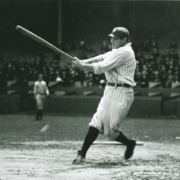

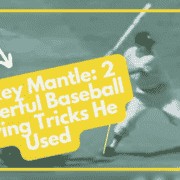
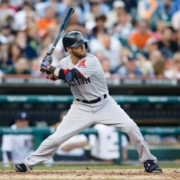
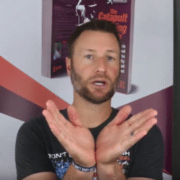

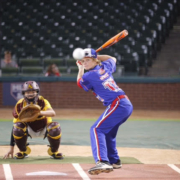





Excellent Joey! Focusing on the Armpits is some big time teachings… I usually say the shoulder joint and the elbow while they are both somewhat linked… But maybe I’m wrong…I guess the other part would be set up… I wonder if it’s good enough to focus on said armpits without knowing how to set up…so your focusing on that armpit (shoulder joint and elbow) with a particular set up… Also, question ???? if I said I like the armpit teaching (perhaps shoulder joint and elbow linked) and I said hip joint and knee… Would that make you think about anything??? And if I said LET…. Does that give you any thoughts… Ive learned its best to ask that make a million comments ?.
Again great teaching and I hope I can add to the topic… I’m out! Later…
~DM
Djura, we still want the hitter to show numbers, and get a downward shoulder angle, but the armpit cue may be a better cue for most hitters. It will depend of course on the learning style. As you know the body is reflexive, so cuing a hitter to bring the front shoulder/elbow to the back knee/hip may work too. It’s just that the armpit is where the Front Arm Fascial Line runs through that Thomas Myers of Anatomy Trains talks about.
I see what your saying… I wonder if the amount of that angle depends on how your lower back is curved… Most athletic players have that good athletic (posture) lower curve as opposed to the flatter lower back ( normal walking posture)… That posture that allows for the bulk of the weight to sit on the pelvis…I always tell people don’t get into “per se” or “absolutes” since so many people have different postures… but more of a general rules.. I diffently like some of these cues… But at the end if your doing it right, the feel for this would be there…I ask my son and a few others… Do you feel that and their eyes open up and say yea…This is some good stuff Joey…. I’ve never heard anybody get into these elements of hitting… I’m having some big issues with a few kids who got the load early and get the foot down early crowd… These were travel folk too…Later.
~DM
Can I ask you a question, remember I played stick ball growing up and didn’t have all these cues… But why would people tell anyone to load early and get the foot down early… I don’t mind early AND slow… But early and down… These are the same people who saying hitting and throwing are the same… Well do that throwing… Well apparently these coaches played pro and everyone gravitates to them… But now these kids have instincts that are so have to fix especially for a REC coach… That would be a great topic… Fixing instincts… And if I here anouther talk about natural athletes I’m going to flip out… Natural… People need to learn how to be athletic…. You have to know the posture… Anyway, here I go again… I’m out later…. Thank ~DM
I really like the armpit thing… By the way isn’t that what a figure skater would do… another way of saying it’s the same but the orientation is different… Or another way of saying we want to hit with the small circle not the big one…Or how about this…If you hold a rubber band in the center… And twist the top… You got power… But what if you twist the top and held it than twist the bottom while holding the top…than just twisted both a little more at the same time… The top goes back and the bottom goes forward and if you ground it and LET it go…That might be nice…I think the armpits and inner thighs are key and when set up correctly the hands and the feet can make it all work….And knowing when to force it and when to let it happen is the hardest thing for most…later!!!
I totally agree with your twisting rubber band analogy. As for the pro coaches teaching old dogmas, it’s all about what’s ‘real’ and what’s ‘feel’. Sprinkle in a little willful ignorance, and now you have a cocktail anyone would drink. I have pro and MLB friends who’d agree with me on this, but a professional player’s resume doesn’t mean a thing in the coaching/instruction world…results with your hitters and teams do. How many ex-MLB players have had lengthy coaching careers at that level? Not many. Einstein never went to space. Rudy Jaramillo, one of the best hitting coaches in the MLB, never played pro ball. Dave Duncan, one of the best pitching coaches in the MLB, was a catcher. Again, player resumes don’t mean a thing in coaching. Sure, they can help you get the job, but after that, you HAVE TO EARN IT with hard work, study, and due diligence in the right things. May be another RANT coming on this subject 😉
https://youtu.be/-tlcuAKTr1Y
What up Joey? I think understanding how to use the serretus anterior is key to both pushes of the hands… If the batter knows how to control this muscle, than he/she will have an easier time to integrate the energy from the spiral line with the arm lines and perhaps other lines too… There a plurality of ways to engage or work them out… Also I’ll work it in any baseball program since many have the scraps distorted based on sitting and video gaming affecting posture… I’m Any comments would be apreciated….Hope all is well…
~DM